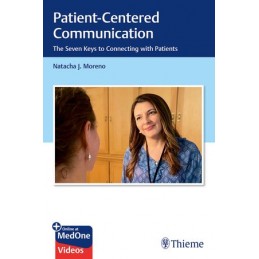- Obniżka


 Dostawa
Dostawa
Wybierz Paczkomat Inpost, Orlen Paczkę, DHL, DPD, Pocztę, email (dla ebooków). Kliknij po więcej
 Płatność
Płatność
Zapłać szybkim przelewem, kartą płatniczą lub za pobraniem. Kliknij po więcej szczegółów
 Zwroty
Zwroty
Jeżeli jesteś konsumentem możesz zwrócić towar w ciągu 14 dni*. Kliknij po więcej szczegółów
A practical resource that provides keys to improved patient-provider communication in healthcare
Engages its readers not only on an intellectual level but also on an emotional one…. This is a must read for everyone in the healthcare field and also for those involved in any form of caregiving. Natacha has written an inspiring book!
George Kohlrieser, PhD, Distinguished Professor of Leadership and Organizational Behavior
Patient-Centered Communication:: The Seven Keys to Connecting with Patients by Natacha J. Moreno supports and enhances caring communication and empathetic dialogue between providers and patients, an extremely important topic that exemplifies excellence in medical practice. The book focuses on seven essential components which form the foundation of compassionate communication. These are mindfulness, intention to bond, positive body language, empathetic vocal tone, attending to the patients state and perspective, and listening with the heart and mind. The chapters provide instruction on effective verbal and nonverbal skills that support each vital key to connection.
Key Highlights
This highly compelling and inspirational book is an essential read for all healthcare professionals and caregivers, and serves as a vital teaching guide.
This book includes complimentary access to a digital copy on https://medone.thieme.com.
Opis
1 Being Mindful of Personal State
2 Attending to the Patients State
3 Considering the Patients Perspective
4 Addressing the Patient with the Intention to Bond
5 Employing Positive Body Language
6 Listening with the Heart and the Mind
7 Using Vocal Tone that Reflects Empathy
Indeks: 102682
Autor: Michael Hsieh
Indeks: 93000
Autor: Maria Codina Leik
Indeks: 62865
Autor: Elizabeth DePoy
Understanding and Applying Multiple Strategies
Indeks: 87933
Autor: Wendy M. Reinke
